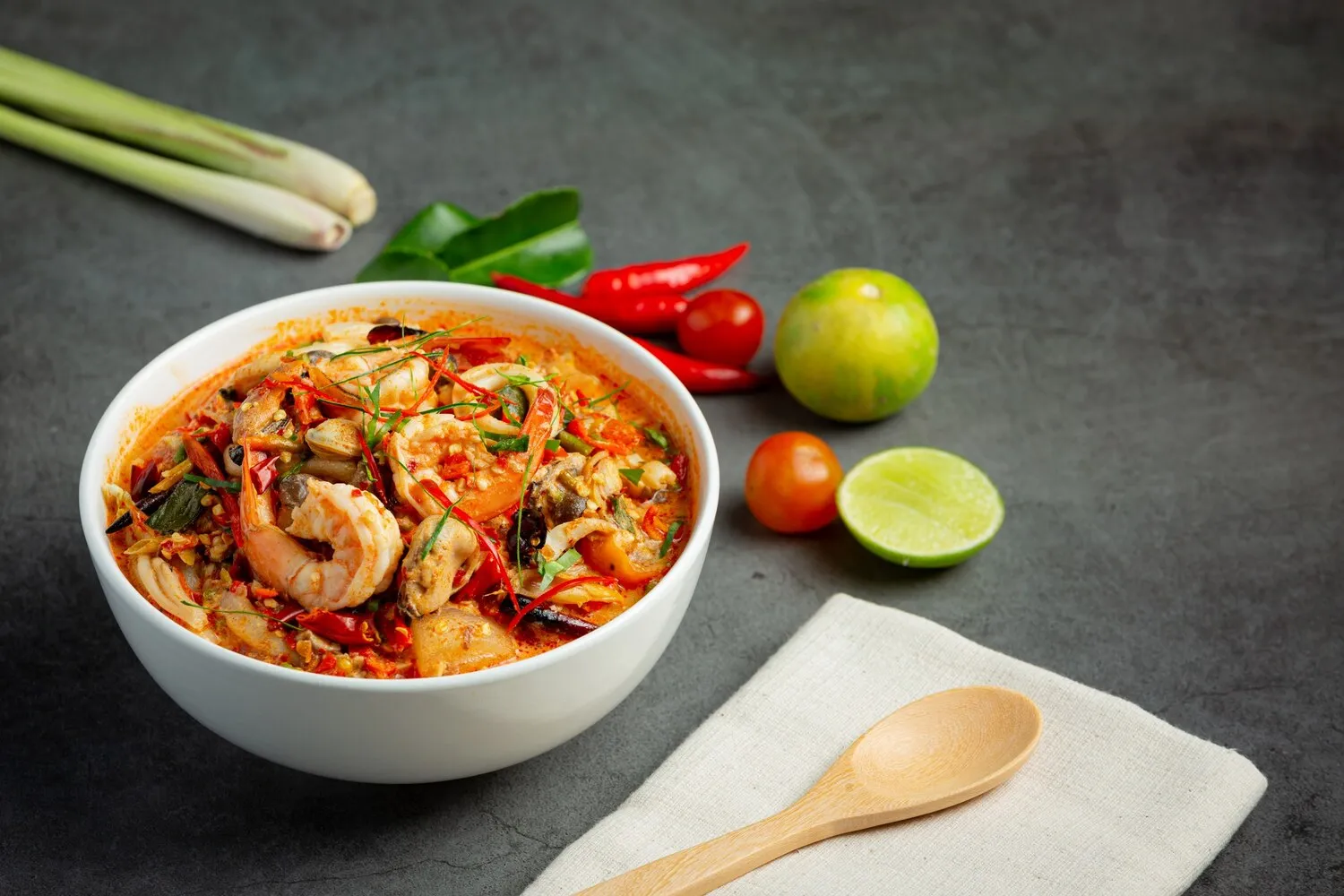
Tacacá
A traditional Amazonian soup made with jambu (a native herb that causes a tingling sensation), tucupi (a fermented cassava broth), shrimp, and tapioca.
Nutrition Facts
* The % Daily Value (DV) tells you how much a nutrient in a serving of food contributes to a daily diet. 2,000 calories a day is used for general nutrition advice.
Tacacá originates from Indigenous Amazonian cuisine, predating European colonization. The ingredients and preparation methods reflect the resources and culinary traditions of the region's native peoples. It evolved over centuries as a staple dish within Amazonian communities.
Tacacá is deeply rooted in Amazonian culture, representing the region's history, resources, and social practices. It's more than just a soup; it's a cultural symbol and a source of regional pride.
Street Food Staple
Tacacá is a very popular street food, readily available from vendors and stalls in cities like Belém and Manaus. It is typically served hot in gourds or bowls, offering a quick and satisfying meal.
Social Gathering
Enjoying Tacacá is often a social activity, with friends and families gathering to share the soup and conversation. It fosters a sense of community and shared cultural identity.
Regional Identity
Tacacá is strongly associated with the Amazon region of Brazil and is considered a culinary emblem of the area. It is featured in regional festivals and celebrations.
Indigenous Heritage
The dish represents a continued link to Indigenous traditions, with the use of native ingredients and preparation techniques passed down through generations.
Tacacá offers a unique and complex flavor profile characterized by a tingling sensation, earthy undertones, and a savory, slightly sour broth. The key flavors come from jambu, tucupi, and the addition of shrimp.
Jambu provides a distinctive tingling or numbing sensation on the tongue, setting Tacacá apart from other soups. Tucupi, a fermented cassava broth, imparts a slightly sour and earthy flavor. Dried shrimp add a savory umami element, while tapioca starch (in the form of goma) thickens the soup and contributes a subtle sweetness and chewy texture. Garlic and chili peppers are frequently used to enhance the savory and spicy notes, varying by individual preparation and regional preferences.
Jambu Preparation
Jambu must be handled carefully. Cook it briefly to release its tingling effect, but avoid overcooking, which can diminish the unique sensation.
Tucupi Quality
The quality of tucupi greatly impacts the flavor. Look for tucupi that has been properly fermented and processed to avoid bitterness or toxicity.
Enjoying the Tingling
The tingling sensation from jambu is a key part of the Tacacá experience. Allow yourself to savor this unique sensation.
Adjusting the Spice
The level of spiciness can be adjusted by adding more or less chili pepper, according to individual preference. Be mindful of the potent heat.
Explore additional Soup dishes and restaurants
Explore SoupDiscover top dining spots and culinary experiences in Manaus.
Explore ManausLearn more about the food culture, restaurant scene, and culinary heritage of Brazil.
Explore Brazil